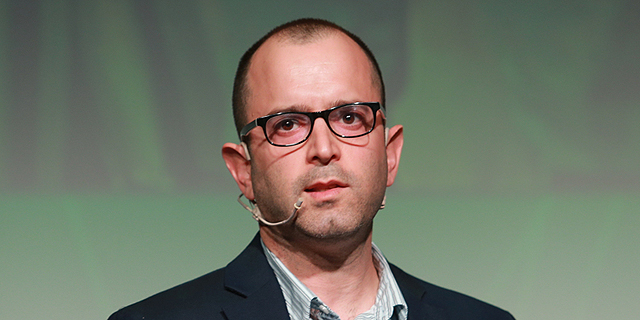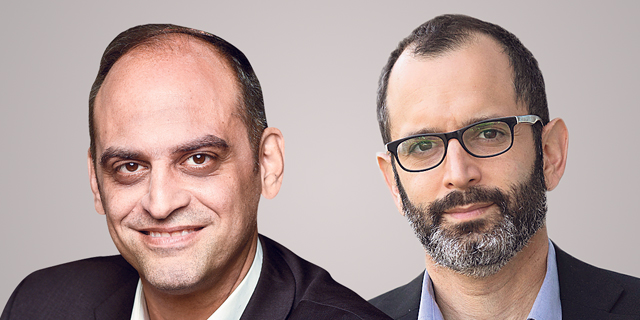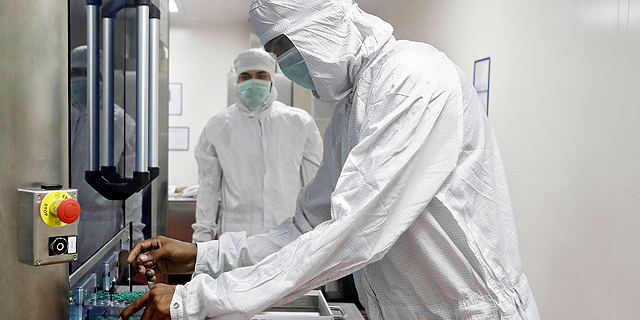
Will the quickly developed vaccines deliver Covid-19 a knockout blow?
An urgent global crisis, near-limitless funds, and a scientific development ripe for use combined to produce rapid results, but will today’s vaccines eradicate the pandemic?
A Small Device that Sequences DNA
“There is no reason for concern over the fact that vaccine development used to take a long time, but only took a year this time. The main reason for that is because deciphering the coronavirus’s structure took a short amount of time,” explains Yaniv Erlich, an adjunct professor at the Efi Arazi School of Computer Science at IDC Herzliya, the CEO of Eleven Therapeutics, and the Chief Science Officer of MyHeritage, which became well known in recent months due to the Covid-19 test it developed. “You can say that the virus’s genetic makeup arrived in the U.S. faster than the virus itself did. I will definitely be taking either the Pfizer or Moderna vaccine,” Erlich states.
MyHeritage is primarily a company that provides DNA tests to determine people’s genetic makeup and conducts genealogical studies enabling its users to locate distant relatives and create family trees. In addition to his role at MyHeritage, Erlich, a world-renown expert in bioinformatics, leads a computational genetics lab at Columbia University and teaches at IDC Herzliya.
“If in 2000 it cost $3 billion to sequence the genome, nowadays it costs about $500,” Erlich explains the leap in computational genomics that was one of the main factors in the vaccine’s development. “Nowadays students at my lab at the IDC do it with a portable device that weighs less than a smartphone and it takes several hours to complete a sample DNA sequence.”
Of course, building a vaccine based on the virus’s genetic material is not that simple. The sequencing tool is inputted with a DNA sample and its output is like pieces of a puzzle that are out of sequence. That’s where the second great technological breakthrough of the last decade— machine learning — enters the process.
“Machine learning can take the pieces of the puzzle and based on algorithms, put together the full picture, which is the virus’s genetic sequence. You can compare it to completing a fully detailed picture based on connecting various points in a very low-resolution image,” explains Erlich.
The next stage, which also used to take much longer, is to locate other viruses with a similar structure to the one that was Discovered in Wuhan in December 2019. Erlich explains that after the virus was fully sequenced, it was compared to other known viruses by artificial intelligence analysis of vast databanks of familiar DNA and RNA sequenced, and it was quickly discovered that it bore a resemblance to the SARS virus. From there the path to a vaccine was relatively short since the medical community and pharmaceutical companies had already been working on vaccines for the virus that broke out in Eastern Asia in the early 2000s. “It’s not that the drug companies didn’t know how to produce a vaccine for SARS or MERS, they just weren’t in a rush to do it since there was no urgency,” Erlich estimates.
When the two viruses broke out there was a big push to develop vaccines to protect the population, but since the outbreaks were relatively contained geographically — mostly impacting Southern Asia—and died down relatively quickly too, the drug companies moved on to other, more profitable projects. Vaccines are not ordinarily a very lucrative field, since they take as much money to develop as drugs do, but enjoy lower returns.
Bringing the Corona Protein to the Right Cell
But the path to complete a vaccine doesn’t end there. Up until now, most viruses were based on weakened or dead viruses. In the case of both tracks, the vaccine developing process takes a long time, since they are mostly carried out by trial and error to determine things like how much does the virus need to be weakened to be effective but not cause the disease to break out, or in the case of a dead virus, how concentrated a dose will cause the body’s defense systems to respond.
An additional and fairly new method of developing a vaccine was the one used by AstraZeneca, Johnson & Johnson as well as the Russian research center GAMALEI, which is based on introducing the relevant portion of the corona protein via a virus produced by chimpanzees (Adenoviruses). Adenoviruses are capable of carrying the coronavirus protein to the correct cells to put the body’s defensive mechanisms to work. All these processes take longer than the RNA method used in Pfizer and Moderna’s vaccines.
“Creating mRNA that the body reacts to in an optimal manner is also done through trial and error only nowadays much of it is based on computational technology that expedited the path to synthetic RNA,” explains Dr. Gur Roshwalb, a trained MD and a managing director at venture capital fund aMoon, which manages over $1.1 billion. “However, there is no single correct answer,” Roshwalb says, “Pfizer and Moderna, for example, each use a different section of the protein, but RNA is the best at mimicking the body’s natural vaccination method.”
The similarity derives from the fact that like in ordinary childhood diseases, the body becomes directly exposed to the virus and becomes its own ‘vaccination factory’ without the need for external intervention. The mRNA method simulates the natural process only using a synthetically made section of the protein. But if RNA is the best option for the body, how come it wasn’t considered before? Roshwalb explains that injecting the RNA into the blood is a very complicated process because it is immediately attacked by the body’s defenses which sees it as an invading substance. “As soon as the body identifies strands of mRNA in the blood, it attempts to destroy it and develops an infectious reaction,” he explains. “For that reason, the strands need to be wrapped with a protective substance and delivered to the correct part of the cell.” Roshwalb explains that it is that difficulty that has delayed successes in the development of RNA-based drugs, despite many attempts. “The molecule’s instability and the body’s reactions don’t allow for the development of RNA-based drugs because it is incapable of remaining active for a sufficient time. It is suitable for a vaccine, however, since it only has to survive in the body for a day or two to activate the immune system.”
Erlich explained that the breakthrough that prevents the body from immediately destroying the RNA strands, which is in use in the Pfizer and Moderna vaccines, was only developed 15 years ago and is also what determines the strict freezing conditions for transport because it is a chemically unstable molecule. “Scientists discovered that the body’s defense mechanisms could be ‘fooled’ by replacing one of the letters in the normal RNA molecule. It’s comparable to changing the font of a letter in a way that the cells that are supposed to attack the strand don’t identify it as a hostile substance.”
The Big Mystery: Do Vaccines Prevent Contagion?
Pfizer’s vaccine received FDA approval over the weekend and the U.S. Government announced it would start vaccinating the public with it on Monday. Next week another FDA meeting to approve the use of Moderna’s vaccine is scheduled. In the background, AstraZeneca, who hit a snag with the doses of the active ingredient in the third stage of clinical testing of its vaccine, published its experiment’s details in the peer-reviewed medical journal Lancet, which is an important step in the approval of drugs and vaccines. Russia’s GAMALEI meanwhile approached AstraZeneca and offered to join forces to jointly produce an improved vaccine, since both are based on the same method.
Johnson & Johnson, another American pharma giant, is breathing down their necks having been granted permission to reduce the sample size of their trial from 60,000 to 40,000 subjects in light of the deteriorating situation in the U.S. with record numbers of infections and deaths from the pandemic. Johnson & Johnson’s effectivity ratio has not been published yet, but its importance lays in it being a single dose treatment, which could dramatically expedite the vaccination process among the public.
There is however a central question that has so far gone unanswered and requires additional experimentation— how effective are the vaccines in preventing infection? Pfizer and Moderna’s experiments were set up in a way that only people complaining of symptoms underwent a Covid-19 test. Because of that, there may have been asymptomatic test subjects that weren’t recorded as being sick. In AstraZeneca’s test, the vaccine may have been less effective, but the subjects were tested every week and asymptomatic people were also recorded as having been infected. “Based on the definitions of the endpoints of Pfizer and Modera’s trials it is impossible to know whether the vaccines necessarily prevent contagion or merely the full-blown disease with its various symptoms. We also can’t tell whether asymptomatic patients who received the vaccine are contagious or not,” says Erlich. “What the vaccines offer now is the ability for governments to open up their countries a bit more and provide people with more space, perhaps while waiting for other vaccines, and that’s better than nothing,” he says, adding that if the vaccine isn’t administered to everyone, there will still be a portion of the population that can infect others. According to Erlich, about 10% of the population won’t develop an immunological response from the vaccine and other people, like those suffering from severe allergies, cancer patients, pregnant women, and children, won’t be vaccinated at all. “That leaves a pretty large group of people, more than 10,000 people for every 100,000 who are not vaccinated and can keep on spreading the virus,” Erlich concludes.
The issue of vaccinating children was one of the main ones causing four members of the FDA advisory panel to vote against green-lighting the Pfizer vaccine, while 17 others voted to approve it. Most of the debate surrounded vaccinating teenagers, aged 16-17 since only 153 test subjects of that age were included in the trial.
The significance of Erlich’s estimate is that even vaccinating the entire population does not spell eradicating the disease, but merely an improved solution to lockdowns, travel restrictions, and bans on public gatherings. Until new trials with different endpoints are carried out, we will not be free to go out without wearing masks and will have to continue practicing social distancing.


